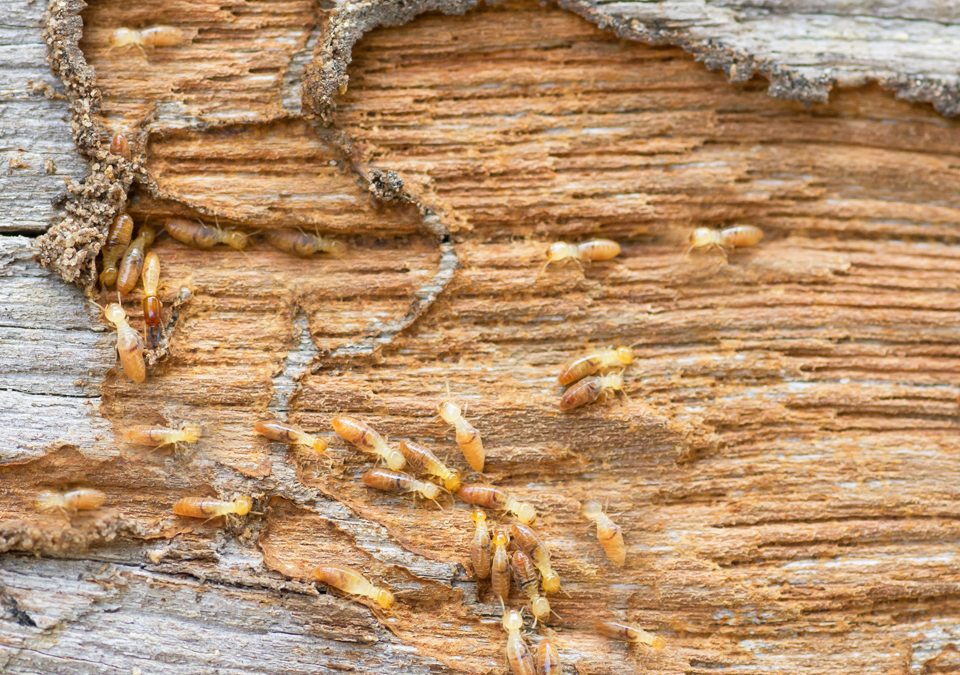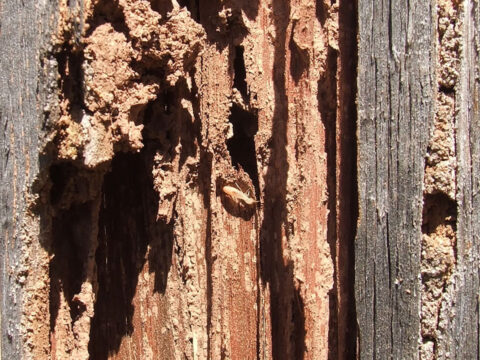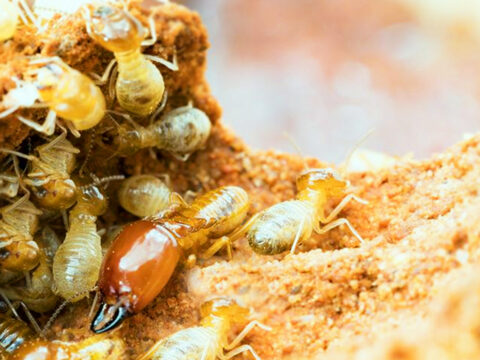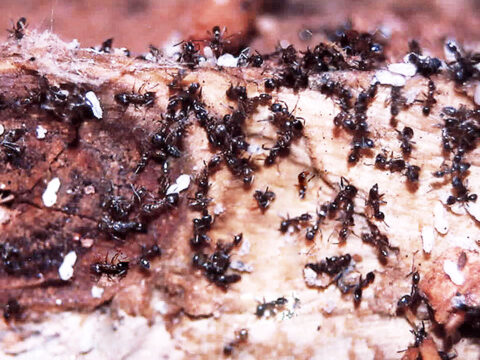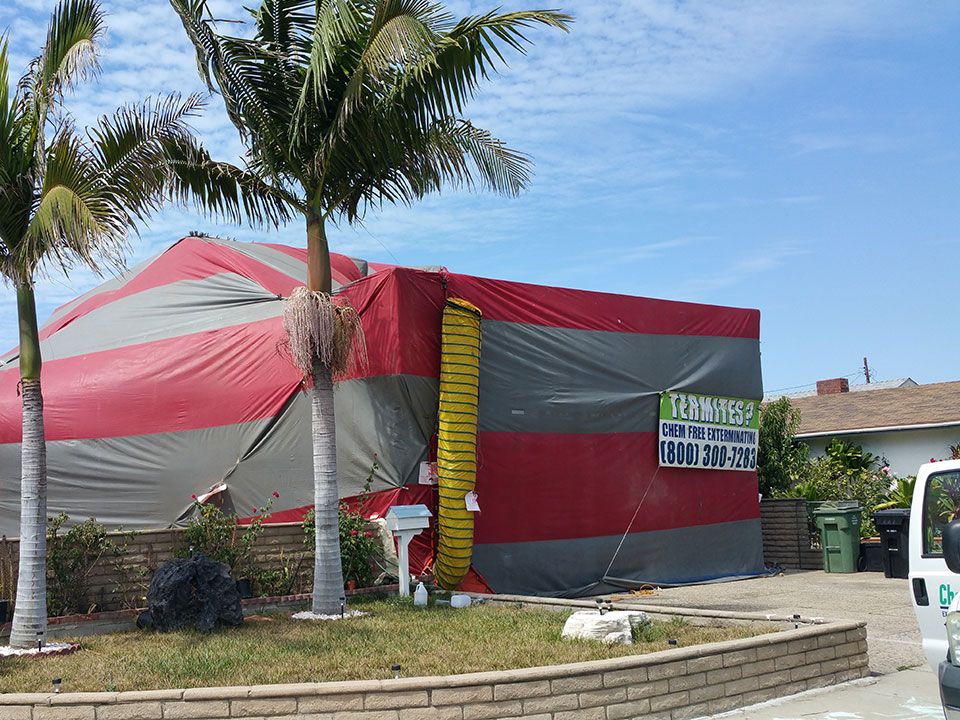
How Long After Fumigation Is It Safe To Return Home?
July 20, 2023
What Time Of Day Are Termites Most Active?
September 20, 2023Drywood termites are uninvited guests that can silently threaten the structural integrity of your home. These tiny yet destructive pests have the potential to wreak havoc, causing extensive damage to your home and all the wooden structures inside. The key to successful termite control lies in locating their nests.
Drywood termites are most common in southern parts of California, such as Orange County. Therefore, you’re most likely to encounter them if you live in this area.
In this comprehensive article, we will discuss the importance of finding drywood termite nests, methods to uncover them, where to look, and the significance of prevention. So if you’d like to know more, keep reading! Also, if you have other questions regarding drywood termites, feel free to reach out to us and our friendly team will be happy to answer all the questions you may have.

Why Is It Important To Identify Drywood Termite Nests?
In case of termite species, location is important. Contrary to most subterranean termite species that build their nests in the ground, drywood termites establish their nests within the wood they infest and are feeding on. Drywood termites seek out dry wood so their nests remain entirely above the ground and are not connected to the soil. The infestations are typically located in higher levels of structures. This makes them a formidable challenge to detect. Also, nesting in the wood allows drywood termites to damage the wood faster.
While you might spot the telltale signs of termite activity – like discarded wings, frass (termite droppings), and weakened wood – these signs alone won’t lead you to the heart of the infestation.
Identifying the nest is crucial because treating it directly addresses the core of the problem. Mere surface treatments may not penetrate deep enough to eliminate the entire colony, which leads to persistent infestations and ongoing damage to your house. If you detect and identify drywood termites on your property, make sure to contact a licensed termite control expert as soon as possible.
How To Locate A Drywood Termite Nest?
Useful methods to locate the nest might include:
Tapping And Listening
One of the simplest yet effective methods to locate a drywood termite nest is through tapping and listening. Termites are noisy eaters, and the sound of their munching can be heard when you tap on wood they’re infesting.
Use something like a flat screwdriver or a similar tool to tap gently along the wooden surfaces. Listen closely for faint rustling or tapping sounds, which can indicate termite activity within the wood.
Visual Inspections
Thorough visual inspections are essential in the quest to locate termite nests. Begin by focusing on areas that are susceptible to infestations, such as attics, crawl spaces, and wooden furniture.
Look for exit holes, small openings from which termites discard their fecal pellets. These pellets, also known as frass, often accumulate below exit holes and can help you pinpoint infested wood.
Pay close attention to wood with blistered or uneven surfaces, as these irregularities might be caused by termite tunneling.
Where To Look For Drywood Termite Nests?
Attics, crawl spaces, and wooden furniture are common hideouts for these invaders, demanding your attention during inspections.
Attics
Attics are commonly infested by drywood termites, as they provide an ideal environment for these pests. Inspect wooden beams, rafters, and any exposed wood for signs of termite activity. Tapping on the wood in the attic can be particularly effective due to the enclosed nature of the space.
Crawl Spaces
Crawl spaces are another favored target for termite infestations. The dark and often damp conditions of crawl spaces create a haven for these pests. Focus on wooden supports, floor joists, and any other accessible wood. If possible, use a flashlight and mirror to examine hard-to-reach areas.
Furniture And Wooden Items
Drywood termites can also infest wooden furniture, decorative items, and even musical instruments. Inspect these items regularly, especially if they’ve been in storage for a long time or in contact with other infested wood. Look for exit holes, frass, and any unusual changes in the texture or appearance of the wood.
Prevention Is Key
Finding the nest is just the beginning. While finding and eliminating termite nests is vital, preventing infestations in the first place is equally important. Drywood termite prevention measures can save you from the stress, expense, and potential structural damage caused by these pests. By taking proactive measures, you can safeguard your home from the devastating consequences of infestations.
Regular inspections, sealing cracks and crevices, and using termite-resistant materials are effective preventive steps. Tapping walls and thorough visual inspections are powerful tools in your arsenal. In addition, creating a barrier between soil and wooden structures by maintaining proper clearance and using termite-resistant barriers can significantly reduce the risk of infestation.
In summary, drywood termites may be small in size but their capacity for destruction is immense. The key to effectively combating these pests lies in locating their nests and taking swift action.
If you suspect a drywood termite infestation beyond your control, don’t hesitate to contact us immediately. Our team at Chem Free Exterminating in Orange County, California, has all the knowledge, experience, and specialized tools so they can help you tackle the issue head-on. Your home deserves the best protection – take action against drywood termites today to secure a pest-free future for your home!

